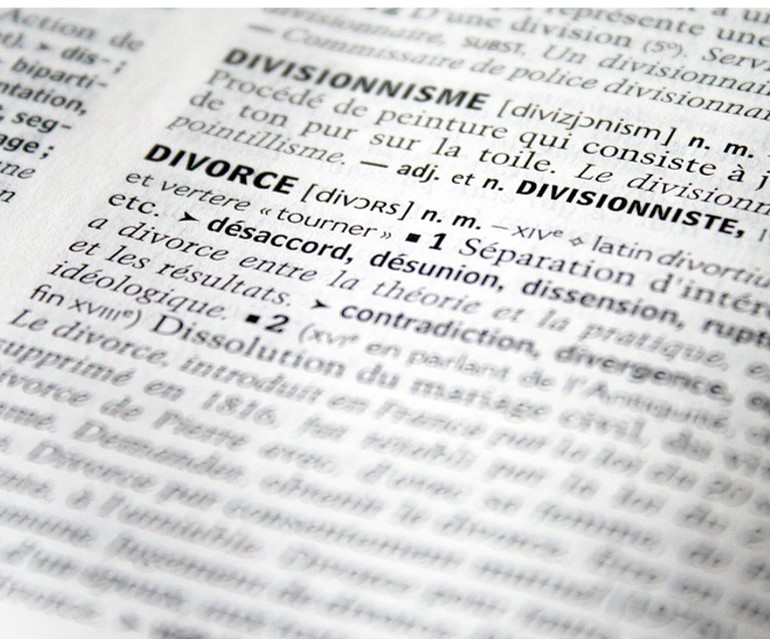Legal
When Does Non-Matrimonial Property Become Matrimonial Property?

This article considers the implications of a recent case considered by the UK Supreme Court in a matter due to reach a judgment later in 2025.
The author of this article, Richard Kershaw (pictured below), a partner at Hunters Law, examines a major court case in the UK with implications for divorce law. As readers know, marital disputes and arguments over property are often important private client wealth issues. We value this contribution to understanding and invite readers to respond. The usual editorial disclaimers apply. Email tom.burroughes@wealthbriefing.com and amanda.cheesley@clearviewpublishing.com if you have comments.

Richard Kershaw
The issue of when and whether non-matrimonial property becomes
matrimonial property in the context of financial remedy
proceedings has been the subject of much debate by family
lawyers. The question was recently considered by five judges of
the UK Supreme Court (UKSC) in Standish v Standish: Lord Reed,
Lord Lloyd-Jones, Lord Burrows, Lord Stephens and Lady Simler. It
is anticipated that they will deliver a landmark judgment later
this year.
Beyond what the UKSC judges must determine in terms of divorce law, the appeal is the final roll of the legal dice for Mrs Standish, who hopes to obtain a larger share of the significant wealth that had been accumulated by her former banker husband before their December 2005 marriage. At the heart of the case is whether non-matrimonial assets that were held by Mr Standish became matrimonial after they were transferred to Mrs Standish as part of a tax planning scheme undertaken before their divorce.
In October 2022, Mr Justice Moor decided at first instance that the pre-marital assets of Mr Standish had become part of the matrimonial asset pool during the marriage. In concluding that these assets had become intermingled or “matrimonialised,” he decided to award Mrs Standish £45 million ($60.4 million) from a total asset pool of £132 million. Of this sum, Moore J determined that £112 million was matrimonial property and £20 million was non-matrimonial and awarded the wife 40 per cent (£45 million) and the husband 60 per cent (£67 million) of the property judged to be matrimonial.
The wife appealed and the husband cross-appealed the financial remedy order made by Moor J. Both parties contended that, for different reasons, the division effected by the judge failed properly to apply the sharing principle.
In overturning Moor J’s decision in May 2024, three judges in the Court of Appeal (CoA) – Lord Justice Moylan, Lady Justice King and Lord Justice Phillips –unanimously disagreed and found in favour of the husband. In taking her case to the Supreme Court, Mrs Standish is appealing the CoA judgment that cut her £45 million High Court award, reducing it by 45 per cent to £25 million – the largest ever reduction by a court in English divorce history.
Some background on the Standish couple is helpful to put in context what the judges must consider. As determined by Moor J, the parties started their relationship in 2003 before moving from Australia to Switzerland in 2004. When Mr Standish, who is British, retired in 2007, they returned to Australia, before purchasing their future family home in England the following year. In 2010, the family moved from Australia to England where they have since remained.
Long before Clive Standish met his future wife Anna, he moved to Australia, where he made his initial fortune in finance. He sold his company in the mid-1980s, personally making A$127 million ($81.9 million). By 1999, he was chairman and CEO of the regional division of the Swiss bank, UBS and, as an executive board member of UBS from 2002 onwards, was earning A$11 million per annum. In that year, he bought Ardenside Station, a large cattle and sheep farm in New South Wales, for about A$12 million. The business operated as Ardenside Angus.
When his relationship started with the future Mrs Standish in 2003, his net worth was c. £57 million. At that time, she had more modest assets: some inherited funds (about A$600,000) and a property, which was subject to a mortgage which he repaid. In 2011, it was sold for A$5.6 million.
Against this background, the central issue that the UKSC must decide is whether a husband's pre-marital assets should be considered to be matrimonial, and therefore subject to equal division. The longstanding principle of sharing holds that matrimonial assets should be shared equally unless there is a valid reason not to. Invariably, provided the parties’ respective financial needs are met, it serves as the key starting point when determining a fair division between the parties in divorce proceedings. The court therefore must reach a decision on two points: when does non-matrimonial property become matrimonial property and how should the sharing principle be applied.
The narrative of events adds an additional layer of complexity to the legal principles being considered. Two financial events that occurred during the marriage are central to the case: a tax planning scheme arranged by the husband and his financial advisors in 2017, which involved a transfer of investment funds then worth approximately £77 million from the husband’s name into the wife’s name, as well as shares in Ardenside Angus being issued to the wife.
The £77 million transfer was designed to avoid the husband being liable to pay UK inheritance tax when he became re-domiciled in the UK for the tax year ending April 2017: by transferring funds to the wife, who was non-UK domiciled, before putting the assets in trust for the benefit of their two children. The Ardenside Angus shares being transferred to the wife was similarly designed to avoid tax.
Mr Standish argued that the asset transfers were made on the express understanding that his wife would settle the amount transferred into a trust. But she did not. Instead, Mrs Standish wrote her husband out of her will, without telling him, and subsequently issued divorce proceedings in 2020, arguing that the money now belonged to her. According to the CoA judgment, the total transfer of approximately £80 million in assets "overwhelmingly comprised wealth which was generated before the marriage.” The Appeal Court judges further declared that the High Court application of the sharing principle was “flawed,” resulting in an “unjustified division of the family’s wealth in the wife’s favour.”
The language of the CoA was distinctly unambiguous, determining that the 2017 transfer of assets into the wife’s sole name “did not change their characterisation. This did not transform them into matrimonial property.” It was also bluntly dismissive in rejecting a submission by the wife that the 2017 assets became her non-marital property: it was said to be “a nonsense to suggest that she became the source of this wealth” because “source is a reflection of when and how an asset was generated, not title.”
The judgment concluded: “The source of this wealth had not changed as a result of its transfer to the wife and, in the application of the sharing principle, this remained the critical factor.” Accordingly, the judges decided that the transferred assets should not be shared by the wife.
Much to the surprise of spouses who have been given assets for tax purposes, and who genuinely understood that those assets were then theirs, this is often not the case. A significant difference of legal opinion exists about whether the “source” of assets is more important than who holds the “title” to them. The old legal maxim that "possession is nine-tenths of the law" does not always mean that having physical possession of an asset automatically gives you a strong legal advantage in a dispute.
At first instance, Mr Standish accepted that he had gifted £80 million in assets to his wife, with no clear understanding of what would then happen. Perhaps, before the highest court in the land, this will be a salutary case of “the husband giveth, but the court taketh away.”